Lebanon 2014: a photo-memoir. Part two: Sidon, ‘first-born of Canaan.’
‘...Sidon is secretive, and seems to have grown from the waves.’
(Colin Thubron, The Hills of Adonis.)

Shrara comes to pick us up at the hotel. He looks up at the glass tower and whistles. He must think we’re rich. If he only knew. Around us the traffic on the Corniche is as crazy as ever, but we’re beginning to recognise a syntax and vocabulary in the language of horns. The serveees taxis drop two or three sharp peeps to attract your attention and offer their services. Drivers tap the horn to offer inflowing vehicles the next slot in the lava-flow. The recipient parps his gratitude. Ungrateful or discourteous drivers are rewarded with a torrent of honks. It looks like a jam, but in fact the traffic moves slowly, inexorably, through the junctions.
And in fact we ease across West Beirut and head south, towards the airport. We drive past densely-packed concrete buildings, blocks of flats with dusty shops and car-repair sheds at their base. This is the edge of Shatila, the ‘temporary’ homes of hundreds of thousands of Palestinian ‘refugees’ - the descendants of those driven off their land during the naqba and the Six-day War. Denied Lebanese citizenship for fear of upsetting the fragile confessional balance of the state, they eke out a living in these shanty town ‘camps.’ Huge banners carry portraits of Arafat, or of Hezbollah leader Sheikh Nasrallah.
As the city thins out and the wide highway meets the coastline again, Shrara pulls over at a tiny roadside stall and, unasked, buys three coffees. Sipping from little paper cups we look out over scrubby fields of tightly-packed broad-leaved ‘palms’ that are actually banana plantations. A little further, and Shrara points out - though it would be hard to miss - a massive red vessel just offshore, like an aircraft carrier with a multi-chimneyed factory on its deck. This is a floating power station, the Fatmagül Sultan, part of an innovative Turkish project to overcome chronic electricity shortages in developing countries struggling to meet expanding demand. (You can read more about the project here
And then the urban development thickens again to our left, and ahead of us, and a headland bristles with minarets and satellite TV receivers, above an untidy harbour and a yellow-white ruin stretching out into a painfully-bright sea. Sidon
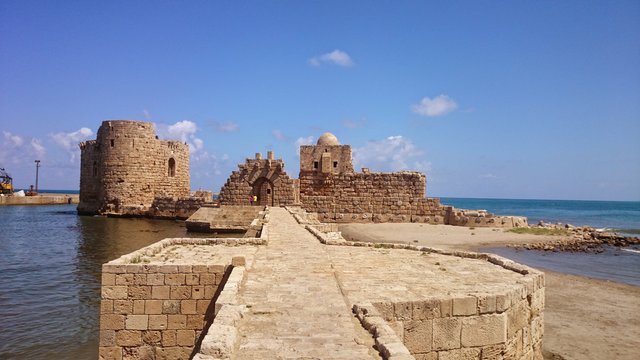
‘Offshore a Crusader castle stands, linked to the headland by an arched causeway… On one side hewn stones stare greenly from the vault of the sea; on the other a silted reef scatters the waves. The castle has a frail, clean look … headless lions dance on the consoles of the entrance gate. Rusted cannon nestle in the sand. And in the walls lie grey and pink granite columns, set by the Crusaders against sapping but brought from Egypt long ago.’
(Colin Thubron)
This is the sea-castle, Qalat al-Bahr, Crusader-built on the site of much older temples, itself destroyed in 1291, then periodically rebuilt and adapted by whoever had taken control of the port. We walk out to the main building on a long causeway, then climb the central keep for views back to the town and up the coast towards Beirut.
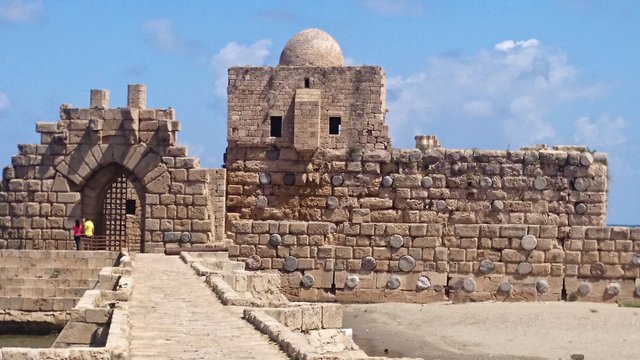
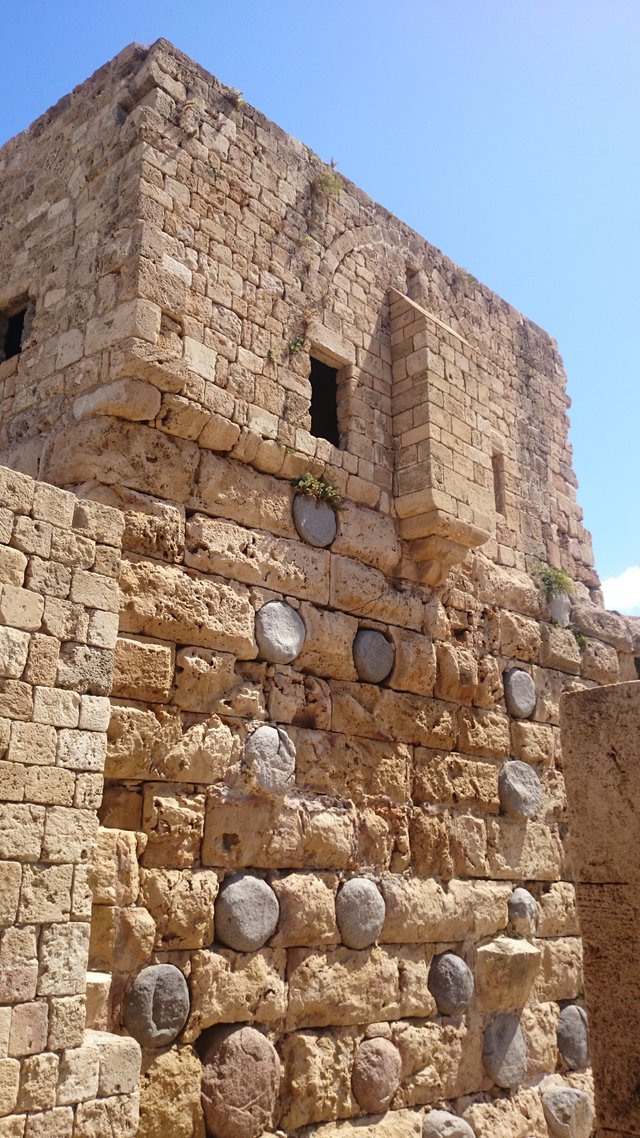
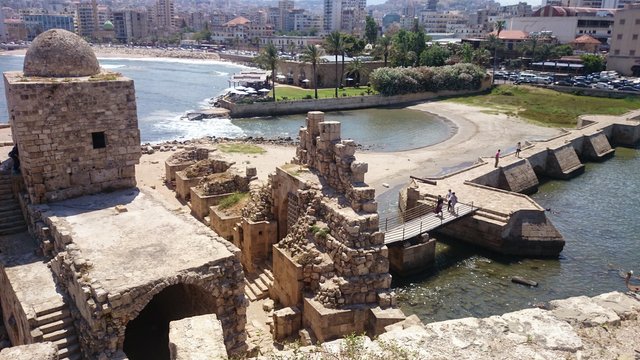
Like so much else on this trip, the historical perspectives are dizzying. Sidon, or Saida, has been occupied for 6,000 years, once lay at the heart of the Phoenician merchant civilisation, and exported its glass, soap and - most evocatively, perhaps - its murex purple dye across the Mediterranean and beyond. (This murex, processed from the internal organs of a kind of sea urchin or sea snail, was so valued by the Romans that its use was restricted to the garments of those of noble and imperial rank.) You can find something more on the history here
‘The older city is on the tip of the headland; the sun only reaches it by accident, so narrow are its streets, and the sandstone blocks which the Turks carved shed a soft agelessness. In dark stores sit craftsmen with deft fingers.’
(Colin Thubron)
‘Sidon seems wholly medieval,’ says Thubron. It’s hard to disagree when we enter the souk’s labyrinth of high narrow alleys where his craftsmen still sit in their dark stores. The trades seem banded together in districts - cobblers with cobblers, electrical repairmen with TV and radio tinkerers, furniture makers with carpenters, butchers hanging their fly-buzzed sides of mutton and beef cheek, as it were, by jowl. Does this encourage competition, or restrict the ability of one trader to undercut another? And, in an economy based on haggling, does that matter?
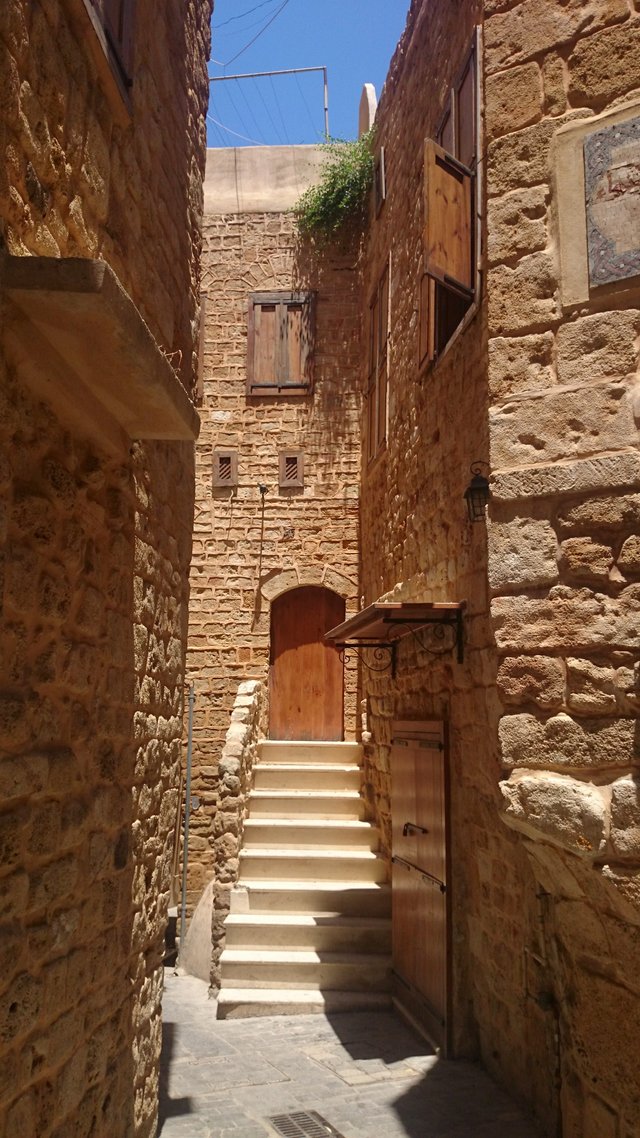
Washing lines limp from window to window above our heads, stairs coil up into tenements from where music drifts down into the alleyways. Cats find shelter from the early afternoon heat under shopkeepers' trestles. Kids on bikes and scooters weave through the shoppers. This is how people - and cats - must have lived since cities rose in this part of the world, and Sidon one of the first.
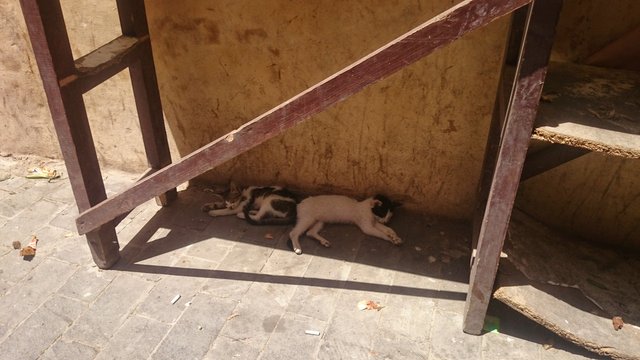
We catch the attention of a confectioner, who calls us to his shopfront and feeds us sweets - nougats, Turkish delight, baklava in a hundred forms, fine-spun sugars and rose syrup, powdered nuts, delicate and punchy at the same time. He gestures at the inner walls of his shop, proud of his photographs - a younger man, posing with Sinatra, Bogart, Jackie O, back in the pre-war days when the Lebanon seemed set fair to be a playground of what used to be called the jet set. All long gone...

In an earlier attempt at encouraging western relations, the Khan al-Franj (the Khan of the Franks or foreigners) is a typical Ottoman-era trading complex. The Khan (Thubron calls it ‘an abandoned prison’) is a large courtyard surrounded by a covered walkway and cells or stalls where merchants could store goods for import and export. Today, there are Turkish flags draped over the arched openings to the cells and stalls, as part of an exhibition supported by that country’s government. We relish the spaciousness, the shade, and as the call to prayer echoes above us, set out to find a drink.

The cafe owner sees we are interested in old things and takes us off to see the back room of his premises - a medieval store-room with vaulted ceilings and just-discernible mural decoration. He seems as amazed as we are that such a treasure should go unnoticed and unprotected. But that seems typical of our encounters with the past of this paradoxical, beautiful country: neglected, even damaged and suppressed, the monuments of its long history seem to ambush us with their sudden presences.
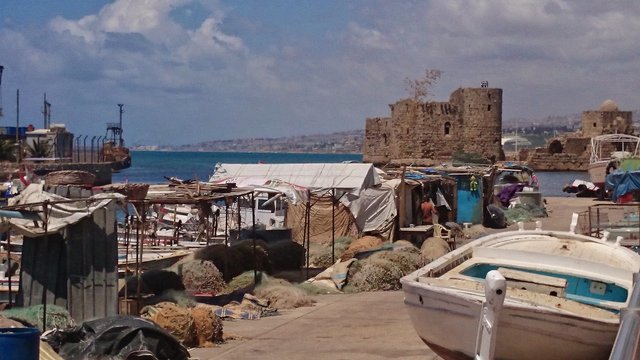
This is the second instalment of my photo-memoir of a 2014 trip to the Lebanon. You can read the first instalment here. The quotations are from Colin Thubron's 1968 journal of a walk through pre-Civil War Lebanon, The Hills of Adonis.
Why not follow me to read the others as they appear?
awesome photographs ........ upvoted :)
Thanks, royal.... Feel free to follow for the next instalments!